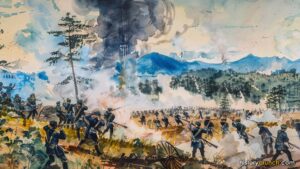The Second Industrial Revolution occurred from the late 19th century into the early 20th century and was a period of technological, economic, and social change. Building on the foundation laid by the First Industrial Revolution, this era introduced a wave of innovations that dramatically transformed industries, enhanced productivity, and reshaped the global economy. Key developments in steel production, electricity, chemical manufacturing, and transportation played crucial roles in this time period.
WHAT CAUSED THE SECOND INDUSTRIAL REVOLUTION?
The Second Industrial Revolution began around the 1870s and continued into the early 20th century. It was a period characterized by significant technological advancements and the widespread adoption of new manufacturing processes. Unlike the First Industrial Revolution, which was centered in Britain, the Second Industrial Revolution had a broader geographical impact, influencing countries such as the United States, Germany, and Japan. Furthermore, this period was marked by rapid urbanization, increased industrial output, and profound economic growth.
INNOVATIONS IN THE SECOND INDUSTRIAL REVOLUTION
Several groundbreaking inventions and technological advancements occurred during the Second Industrial Revolution. For instance, the main innovations occurred in steel production, electricity, transportation and communication technologies.
One of the most significant advancements was in steel production. The Bessemer process, developed by Henry Bessemer in the 1850s, revolutionized the production of steel by making it cheaper and more efficient to produce. This innovation paved the way for the construction of skyscrapers, bridges, railways, and ships, which fuelled industrial and urban growth. Steel became the backbone of modern infrastructure and an essential material in manufacturing. Furthermore, it was incredibly important to industrialization in the United States.
The development of electricity was another important development of the Second Industrial Revolution. For instance, Thomas Edison’s invention of the incandescent light bulb in 1879 and the establishment of electrical power stations, revolutionized the way people lived and worked. Electricity provided a reliable and flexible source of energy that could power homes, factories, and transportation systems. As well, Nikola Tesla’s work on alternating current (AC) further improved the efficiency and distribution of electrical power, making it possible to transmit electricity over long distances.
Transportation technologies experienced dramatic improvements during this time as well. For instance, the expansion of railway networks allowed for the movement of goods and people across vast distances, which contributed to economic growth. Also, the invention of the internal combustion engine led to the development of automobiles and airplanes, further revolutionizing transportation. In fact, the Wright brothers’ famous first successful powered flight in 1903 marked the beginning of the aviation industry, while Henry Ford’s introduction of the assembly line in 1913 revolutionized automobile production, making cars affordable for the average person.
Communication technologies also saw significant advancements during the Second Industrial Revolution. For example, the invention of the telephone by Alexander Graham Bell in 1876 transformed how people communicated, making long-distance communication faster and more efficient. As well, the development of wireless telegraphy, pioneered by Guglielmo Marconi, laid the foundation for modern radio and communication systems.
IMPACTS OF THE SECOND INDUSTRIAL REVOLUTION
The Second Industrial Revolution had a profound impact on industry and the global economy. More specifically, it led to the rise of large-scale manufacturing and mass production, which significantly increased output and efficiency of many different industrial sectors. For example, factories became more mechanized, with assembly lines and specialized machinery streamlining production processes. This shift resulted in lower costs, higher productivity, and the creation of new consumer markets.
The era of the Second Industrial Revolution also saw the emergence of big businesses and industrial giants. Corporations like Standard Oil, U.S. Steel, and General Electric dominated their respective industries, benefiting from the growth of industrialization and technological advancements. This period is known as the ‘Gilded Age’ in the United States, which was a period of rapid economic growth, industrialization, and wealth accumulation in the United States. This period also witnessed the rise of monopolies and trusts, leading to concerns about market competition and prompting regulatory measures such as antitrust laws. For instance, some people criticized the tactics of the main businessmen of the era and referred to them as ‘robber barons’.
Another important impact of the Second Industrial Revolution was urbanization, which increased as people migrated to cities in search of employment opportunities in factories. This rapid urban growth led to the expansion of urban infrastructure, including housing, transportation, and public services. However, it also brought challenges such as overcrowding, poor sanitation, and inadequate living conditions.

